As a business owner looking to explore the portable fridges market and boost eCommerce sales, selecting suitable fridges for customers is core to your success.
This article will walk you through everything you need to know when choosing car fridges to sell on your eCommerce store.
Table of Contents
Why do car fridges have business potential?
What to look for when selecting car fridges to sell?
Types of car fridges
Other considerations for choosing car fridges for different end customers
Final thoughts
Why do car fridges have business potential?
Car fridges hold great business potential because there’s a thriving demand for them. Millennials and van-life enthusiasts need these compact fridges for outdoor recreational activities and major road trips.
These factors aside, increasing camping activities, rising living standards, growth in income and employment rates, and Gen Z’s obsession with new technologies are also driving the market.
According to this report by Future Market Insights, the portable (car) fridges market will exceed US$ 3,188.3 million by 2032, growing at over 6.40% compound annual growth rate (CAGR).
Key manufacturers match this demand by rolling out fridge innovations in different shapes and sizes to be carried anywhere and make road trips convenient.
Keeping up with these trends as a business owner means you must include these high-demand fridges in your catalog to attract new sales and satisfy evolving consumer needs.
What to look for when selecting car fridges to sell?
When choosing car fridges to sell, consider key things such as size, cooling capacity, type, and customers’ lifestyles. Customers want the best, and selecting car fridges that meet these requirements will keep them coming back.
Consider these significant factors;
Size
Fridge sizes are determined by the number of cans and liters they can hold. But these aside, where and how they fit is just as important.
For instance, if a buyer prefers to install a portable fridge in their trunk, a larger car refrigerator — particularly 60 liters and above — will serve.
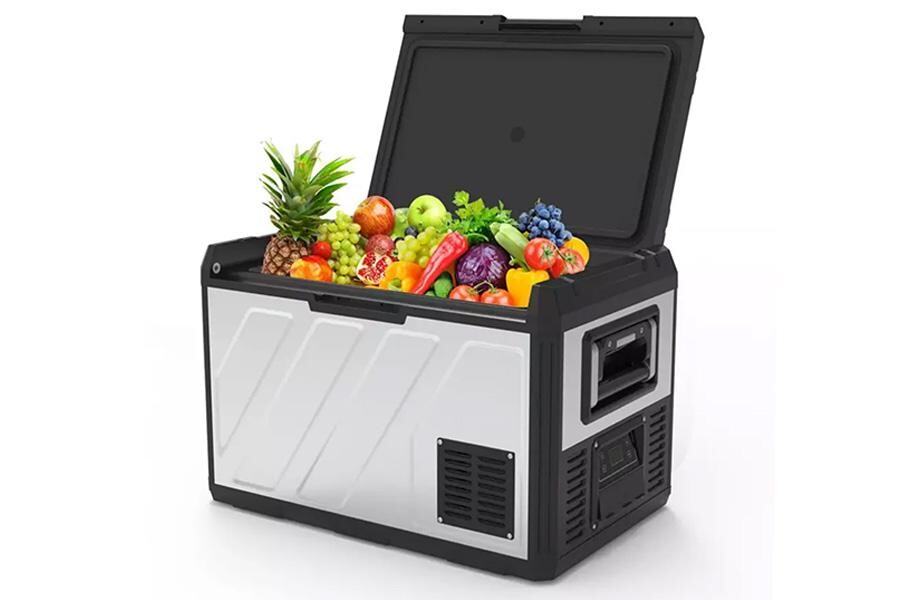
However, some customers may prefer a passenger-seat installation. Hence, your catalog should also offer compact mini car coolers, between 3.4 – 5 liters, to cater to this need.
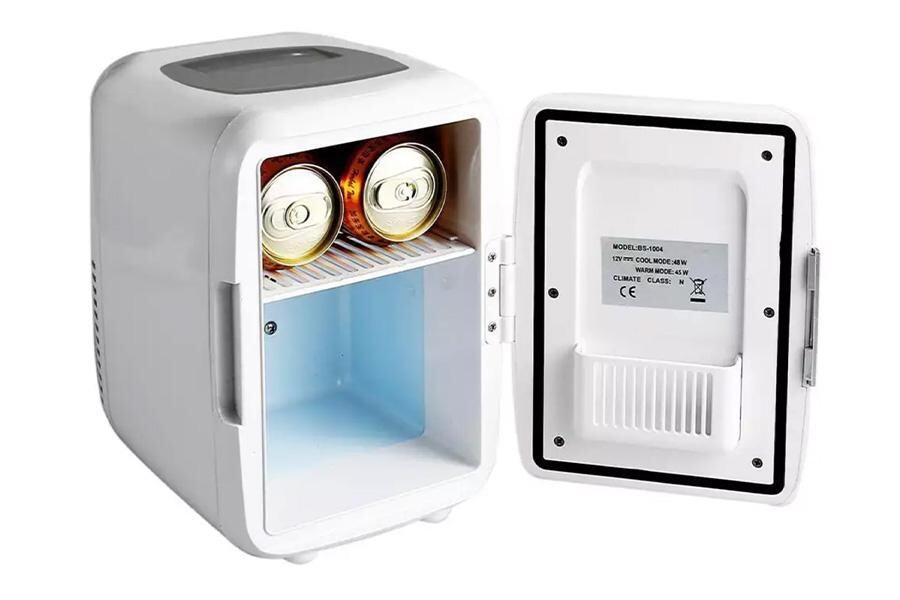
Source of power
Depending on the use, different options exist for powering car refrigerators.
Customers going on a short trip (perhaps, over the weekend) or having access to a powered campsite may opt for 12v fridges. These fridges use the car’s 12v cigarette lighter socket when running.
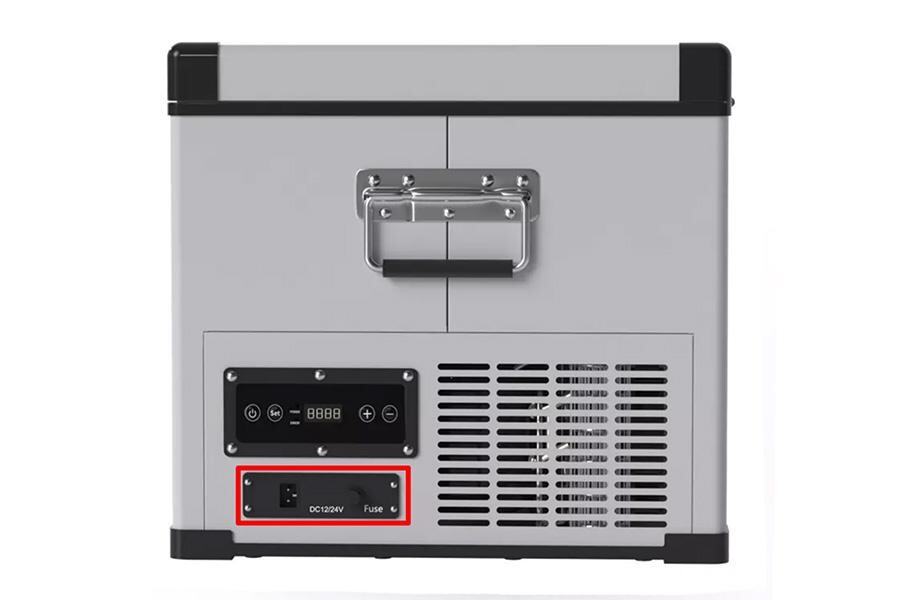
Remember that connecting a 12v fridge to the car’s lighter socket drains the starter battery when the car isn’t running. You’ll have to compensate for this drawback by offering auxiliary batteries and chargers to customers planning longer trips or needing a consistent power source.
The ideal car fridge setup needs at least one auxiliary battery. But a dual battery setup is often the best, especially if you’re considering customers with fixed-voltage alternator vehicles.
These setups provide flexibility and suitability for different alternator types, amp sizes, and installation locations. It also prevents your customer’s starter battery from going flat, getting them stranded.
Have your customers pair their auxiliary battery setup with a compatible DC-DC battery charger to fully charge their second battery in the auxiliary setup.
You should also include portable solar-powered car fridges as they’re a more versatile option for off-grid users.
Cooling capacity
It’s okay to sell car fridges with “extra-leisure” inclusions like WiFi and smart apps to help with temperature settings and reduce compressor times. However, most car fridge users just want more bang for their buck.
That’s where you come in.
By looking out for car fridges that offer improved insulation properties, regardless of external temperature, you offer value for their chilly investment.
To stand out, sell portable fridges with the following cooling features;
- Plenty of vents around the sides and top of the compressor. This helps to rid the fridge of hot air, reducing lower run times.
- Easy-to-use temperature settings that regulate and keep to a set temperature during ambient changes. This shows the unit is well insulated and suitably programmed to control the compressor, conserving energy.
- Single, dual, or multiple cooling zones in fridge or freezer compartments. This is a bit tricky, though, as single or dual-zone fridges may over-cool one or two particular spots at the expense of other crucial spots. This, however, does not make it bad — just more suitable for smaller-size fridges or mini coolers with low storage capacity.
By contrast, multiple cooling zone fridges regulate the temperature in different areas, preventing over-cooling of certain foods like vegetables, salads, or even freezing drinks.
Cooling features aside, including insulated car fridge covers in your catalog, boost sales. These covers, along with fridge walls or lids, help protect the outside of a car fridge from direct sunlight or heat.
Remember: car fridges with high insulation provide long-lasting cooling effects and consume less power than others with low insulation.
Anti-shake
Choose car fridges with an anti-shake or anti-inversion feature for protection against damage when the car leans into a slope.
An anti-shake feature protects car fridges from damage during long trips. They’re ideal for improving the durability of the fridge.
Types of car fridges
Car fridges come in different types. And each type has its features, advantages, and disadvantages. Below are the types of car fridges to consider for your eCommerce store:
1. Absorption car fridges
An absorption car fridge utilizes heat sources to generate energy for cooling. They’re ideal for long trips and locations where electricity is unstable. Because they contain Ammonia as a refrigerant, they keep temperature low while providing a maximum cooling effect.
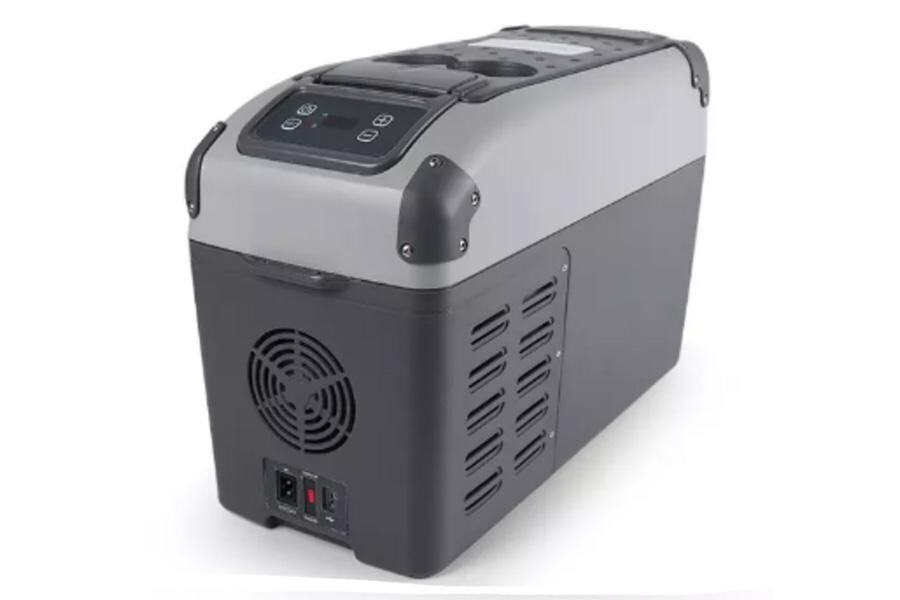
Additionally, they’re excellent for protecting car batteries because they run on gas.
They’re cost-effective and can work from a 12V cigarette lighter power socket, liquified gas, and a standard 220V outlet. Their major limitation is they’re delicate and can break on shaking.
2. Thermoelectric car fridges
Thermoelectric car fridges are small-midsize volume auto-refrigerators that hold between 5 liters – 60 liters. Their simple design allows current to flow through the car’s semiconductor wafer.
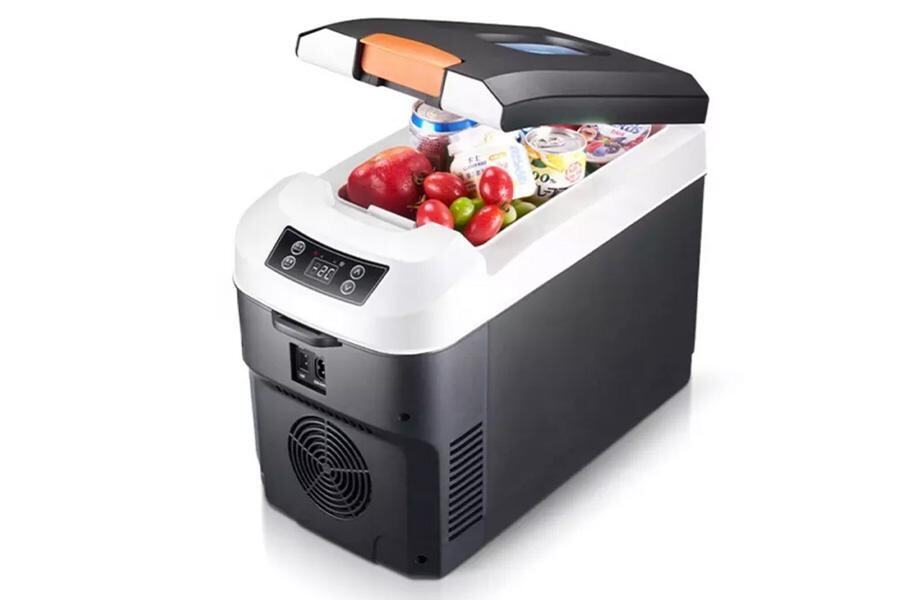
Because of their changing polarity, thermoelectric fridges can provide cooling and warm effects simultaneously. This makes them ideal for all-year-round travel and winter seasons. In addition to that, they’re budget-friendly and can work from a standard power outlet.
The only downside to this auto fridge type is that they have low cooling capacity, are small in size, and depend on ambient temperature to work.
3. Compressor car fridges
Compressor car fridges are one of the most typical auto fridges in the market. They have the highest cooling capacity among other types and can freeze content to a high level. They’re powered by a motor compressor, evaporator, and refrigerant, making them super ideal and efficient in freezing contents.
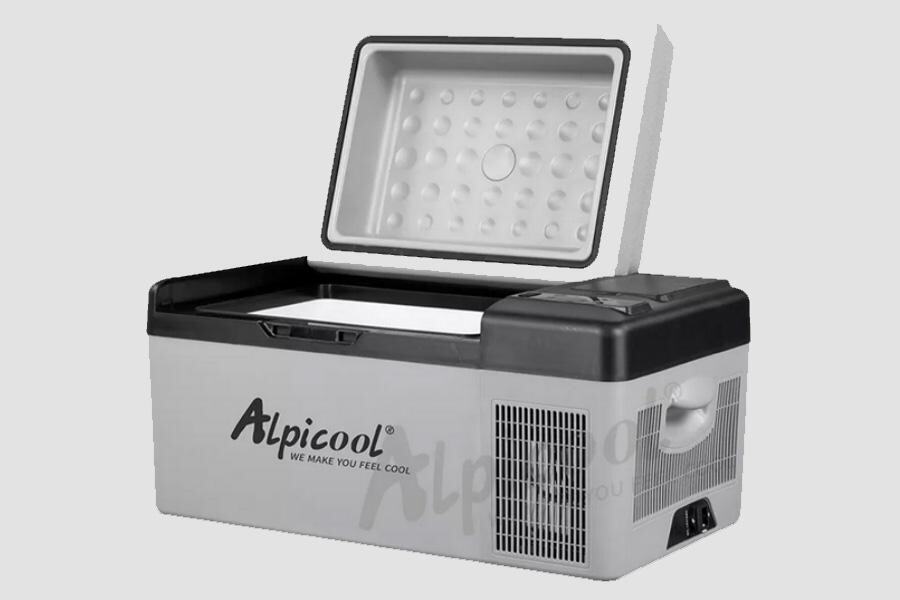
Besides their cooling capacity, they’ve got a large volume and hold up to 250 liters, with long-lasting cooling effects.
Furthermore, compressor fridges can run independently of ambient temperature, come in different designs, and are adjustable to low temperatures.
These features make them weighty and relatively expensive compared to other auto fridge types.
4. Isothermal car fridges
Isothermal auto fridges are best for momentary cooling and food preservation. They’re usually compact and light and come in two basic designs: fabric case or plastic, plus cushioning material.
They’re low maintenance and energy-efficient, making them ideal for use in locations without external power.
Other considerations for choosing car fridges for different end customers
Different end users will have different needs when planning to buy car fridges.
Because of this, the above-listed factors are crucial. However, you should also consider the purchasing power of your customers, energy-saving features, and durability.
So, keep these other considerations in mind;
1. Ensure to pick cost-effective car fridges for buyers without compromising your profit margin. You’re in business for profit, so make sure the products you choose have the potential to make you money.
2. Choose auto fridges with excellent durability and energy-saving features. Energy-saving is a crucial factor end users consider before buying a portable fridge.
3. Finally, pick car fridges with available spare parts on the market. Why? Because it’s common for fridges to break down, customers will choose to go for those that are easy to find.
For this reason, buy from manufacturers with a broad national distribution network to offer buyers replacements whenever needed.
Final thoughts
Updating your catalog with in-demand portable fridges will boost sales by attracting the right customers to you. But depending on the buyer’s needs, one out of the many types listed in this article will serve.
Remember, each car fridge has its uniqueness, advantages, and downsides. So ensure to thoroughly understand their specifications and how they fit your customer’s needs before making a choice.
Ready to tap into the market? Use this guide to get started.




